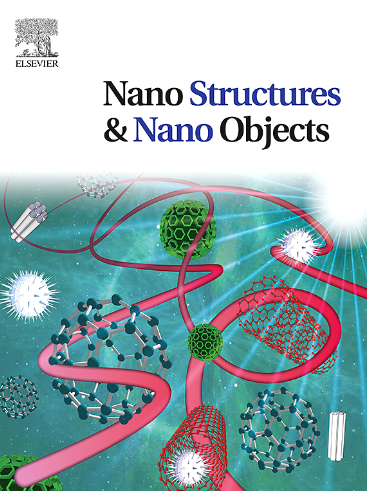Recent advancements in nanostructured flame-retardants: Types, mechanisms, and applications in polymer composites
IF 5.45
Q1 Physics and Astronomy
引用次数: 0
Abstract
Nanostructured flame-retardants offer an innovative approach to improve the fire safety of materials while addressing performance, environmental, and health challenges associated with traditional flame-retardants (FRs). By utilizing nanoscale FRs such as CNTs, nanoclays, nanoparticles, graphene, and metal-organic frameworks, unique flame retardancy mechanism can be obtained. Nanostructured flame-retardants enhance the fire resistance of polymer and polymer composites through heat dissipation, barrier effects, and char promotion, significantly reducing heat and gas transfer. Furthermore, the high specific surface area of nanostructured flame-retardants ensures effective dispersion within the polymer matrix without compromising thermal or mechanical properties. These materials also provide multi-functional properties such as electrical conductivity and thermal conductivity along with flame retardancy. Due to its multi-functional properties, these materials have various applications in different industries such as construction, electronics, automotive, and aerospace. However, challenges such as compatibility with polymers, potential environmental impacts and scalability are the critical areas, which need more focus in ongoing research. This review is mainly focused on nanostructured flame-retardants and their types, mechanisms and applications of flame-retardant polymer composites, emphasizing recent advancements. It also highlights their role in improving material sustainability and discusses challenges and future directions. Nanostructured flame-retardants offer a promising path toward safer, more efficient, and sustainable fire-resistant materials, meeting the increasing demand for multifunctional and ecofriendly solutions across key industries.
纳米结构阻燃剂的最新进展:类型、机理及其在高分子复合材料中的应用
纳米结构阻燃剂提供了一种创新的方法来提高材料的防火安全性,同时解决与传统阻燃剂(FRs)相关的性能、环境和健康挑战。利用碳纳米管、纳米粘土、纳米颗粒、石墨烯、金属有机骨架等纳米级阻燃材料,可以获得独特的阻燃机理。纳米结构阻燃剂通过散热、阻隔效应和促进炭的作用增强聚合物和聚合物复合材料的阻燃性,显著减少热量和气体传递。此外,纳米结构阻燃剂的高比表面积确保了在聚合物基体内的有效分散,而不会影响热或机械性能。这些材料还提供多功能特性,如导电性和导热性以及阻燃性。由于其多功能特性,这些材料在建筑、电子、汽车和航空航天等不同行业有各种应用。然而,与聚合物的相容性、潜在的环境影响和可扩展性等挑战是关键领域,需要在正在进行的研究中得到更多关注。本文主要介绍了纳米结构阻燃剂及其类型、阻燃机理和阻燃高分子复合材料的应用,并重点介绍了纳米结构阻燃剂的最新进展。它还强调了它们在提高材料可持续性方面的作用,并讨论了挑战和未来方向。纳米结构阻燃剂为更安全、更高效和可持续的耐火材料提供了一条有前途的道路,满足了关键行业对多功能和环保解决方案日益增长的需求。
本文章由计算机程序翻译,如有差异,请以英文原文为准。
求助全文
约1分钟内获得全文
求助全文
来源期刊

Nano-Structures & Nano-Objects
Physics and Astronomy-Condensed Matter Physics
CiteScore
9.20
自引率
0.00%
发文量
60
审稿时长
22 days
期刊介绍:
Nano-Structures & Nano-Objects is a new journal devoted to all aspects of the synthesis and the properties of this new flourishing domain. The journal is devoted to novel architectures at the nano-level with an emphasis on new synthesis and characterization methods. The journal is focused on the objects rather than on their applications. However, the research for new applications of original nano-structures & nano-objects in various fields such as nano-electronics, energy conversion, catalysis, drug delivery and nano-medicine is also welcome. The scope of Nano-Structures & Nano-Objects involves: -Metal and alloy nanoparticles with complex nanostructures such as shape control, core-shell and dumbells -Oxide nanoparticles and nanostructures, with complex oxide/metal, oxide/surface and oxide /organic interfaces -Inorganic semi-conducting nanoparticles (quantum dots) with an emphasis on new phases, structures, shapes and complexity -Nanostructures involving molecular inorganic species such as nanoparticles of coordination compounds, molecular magnets, spin transition nanoparticles etc. or organic nano-objects, in particular for molecular electronics -Nanostructured materials such as nano-MOFs and nano-zeolites -Hetero-junctions between molecules and nano-objects, between different nano-objects & nanostructures or between nano-objects & nanostructures and surfaces -Methods of characterization specific of the nano size or adapted for the nano size such as X-ray and neutron scattering, light scattering, NMR, Raman, Plasmonics, near field microscopies, various TEM and SEM techniques, magnetic studies, etc .
 求助内容:
求助内容: 应助结果提醒方式:
应助结果提醒方式:


